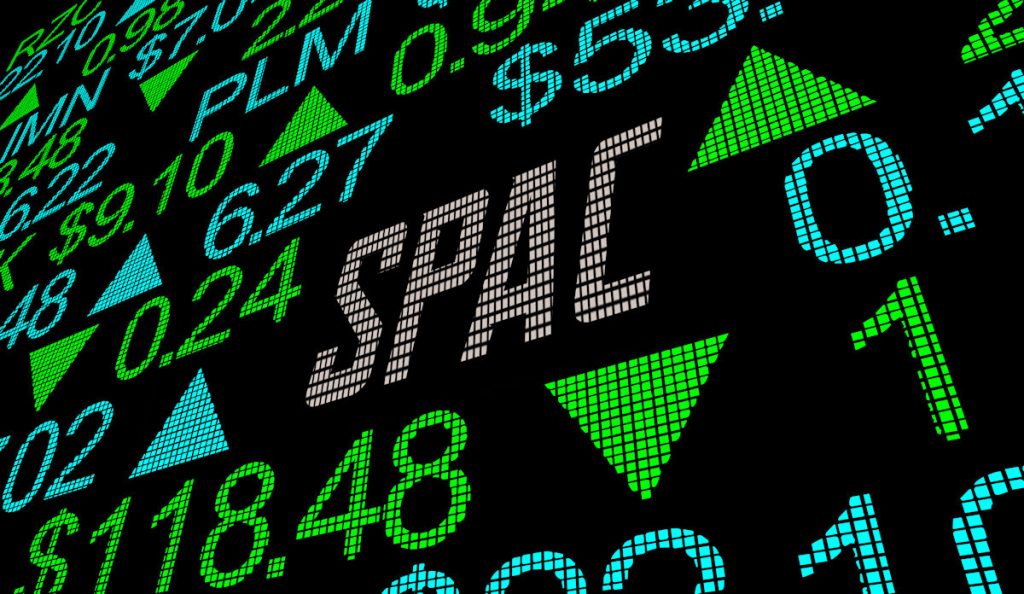
SPAC-TACULAR FROTHY MARKETS & NFTS
SPAC-tactular Frothy Markets & NFTs
“It is never a good idea to make an investment decision just because someone famous says a product or service is a good investment.”
– SEC Announcement, November 2017
Despite the best efforts of the Securities and Exchange Commission in 2017 to draw people’s attention to the folly of investing in an asset endorsed by your favorite celebrity, the trend for celebrity-backed investments continues apace in 2021. The phenomenon is not limited to startups, either. Established names like Goldman Sachs and State Street have both called in celebrities to endorse financial products.
The common theory goes that millennials trust influencers with millions of social media followers more than they trust large financial institutions. But there’s a less commonly espoused theory that stands up to scrutiny better than the social media followers one: in a market where returns are hovering close to zero, it’s far easier for a financial institution to sell a pig when it’s wearing lipstick.
The repackaging of largely unattractive (and sometimes downright worthless) assets is a common thread at the end of market cycles. In 2008, it involved bundling (really) low quality debt in with Triple-As in the form of CDOs. In 2001, repackaging involved sticking ‘.com’ at the end of everything. In 2021, repackaging involves celebrities endorsing assets like SPACs and NFTs.
SPACs
Special Purpose Acquisition Companies (SPACs) raised over $82 billion in 2020, and already look like topping that in 2021. This would be the definition of frothy on its own, but then you stand back for a moment and realize that you can hardly name more than a small handful of companies that a SPAC acquired in the same period. Well, some of the best companies pass under the radar sometimes, right? Sometimes hundreds of them.
This volume of deals is a creating a problem all of its own. With so many SPACs entering the market at the same time, usually with access to significant amounts of leverage, prices in the private equity market are being driven through the roof. And the obligation to put the money to work in a certain time period or be forced to hand it back – not something they want to do – is a perverse incentive that only serves to stoke prices further.
But the growth of SPACs is not the only eye-watering aspect to all of this. The sponsor economics are near outlandish. SPAC sponsors typically pay anything up to 5% of the IPO proceeds on the understanding that they’ll receive 20% of the common equity when the asset has been listed. It begs the question: even if the management team behind the company is world class, exactly how good are you expecting them to be in this market to justify such a return ?
There are so many SPACs in the market today chasing so few quality investments, they need someone that can differentiate their offering. Repackage it, as it were. Just introduce a high-profile celebrity name that will draw in retail investors to the IPO, The latest in a long line is Jennifer Lopez. Her SPAC will probably end up losing more money than Gigli, but its sponsors won’t mind. They’ll be Out of Sight.
NFTs
If SPACs suggest that the markets have begun the lipstick-on-a-pig stage of the market cycle, Non-Fungible Tokens (NFTs) provide concrete proof of it. NFTs are essentially unique digital assets stored on a blockchain. They’ve been gaining headlines recently because of the tens of millions of dollars that some people have been willing to pay for, well, digital images and pieces of audio.
The supposed rationale of this is that the buyer of the asset has full artistic rights for the piece. However, that rationale does not quite explain how Christie’s auction house was recently able to sell a ‘digital collage’ for nearly $70 million. Bear in mind that, being a digital asset, the collage can be copied and pasted for a perfect reproduction in seconds. They’re not going to find a second buyer at that price.
The Financial Times has called the phenomenon, ‘the latest get rich quick scheme for the cryptosphere,’ which seems like quite a succinct summation of what’s happening. And for the record, the jewel in the crown of the cryptosphere, Bitcoin, was created in 2008. Right at a time when market returns were no longer attractive, and people had lost faith in financial institutions.
What Bitcoin, the cryptosphere, and an ever-expanding array of concepts (and we’re stretching the definition of ‘concept’ here) like NFTs have in common is a growing fetish for digitization in the world of investment and beyond. They offer proof that as long as people continue to show willingness to pay for worthless garbage, there will be someone willing to provide a fresh supply.
Endgame
When Sir Isaac Newton was asked about the South Sea Bubble in the early 1700s, he answered “I can calculate the movement of the stars but not the madness of men.” In 2021, the madness of men is far easier to calculate than it was in the early 18th century. It is worth approximately $70 million, and naturally, it is digitized.
When the current punch bowl is removed and investors wake up from their drunken momentum stupor, we think they’ll be shocked to see that the true momentum is on main street and the economy, not the stock market. In the post covid recovery, we see boon to the private markets and main street lending. The momentum investors of the latest fads will still be nursing their hangover and wake up halfway through the next cycle.